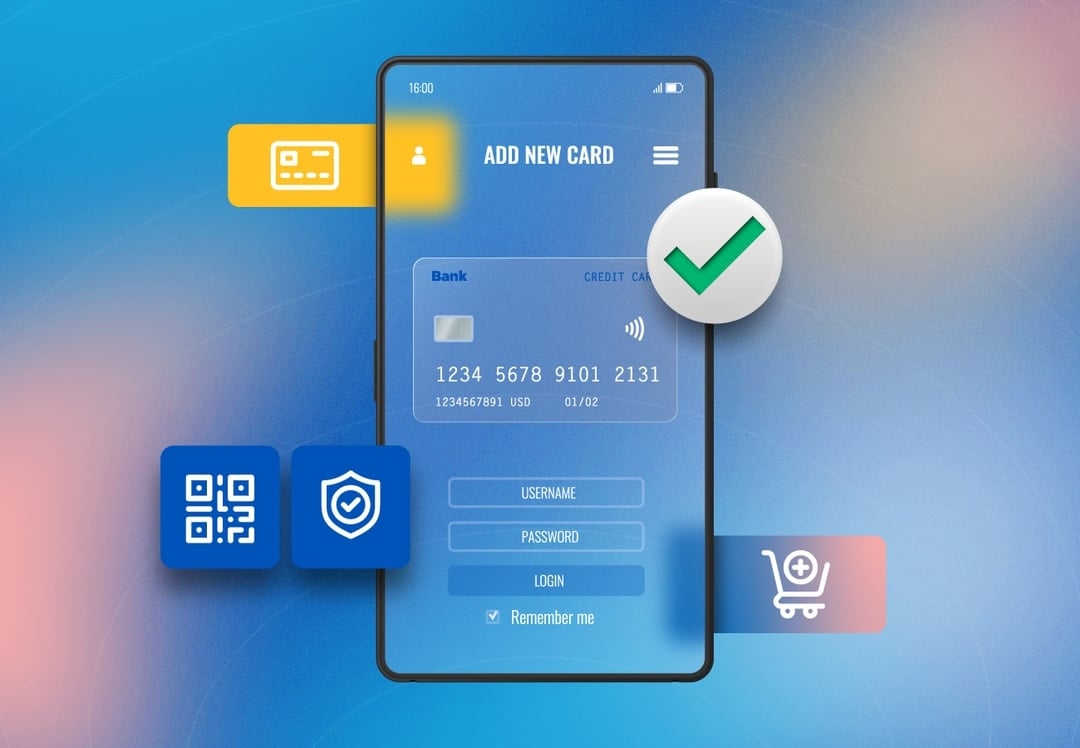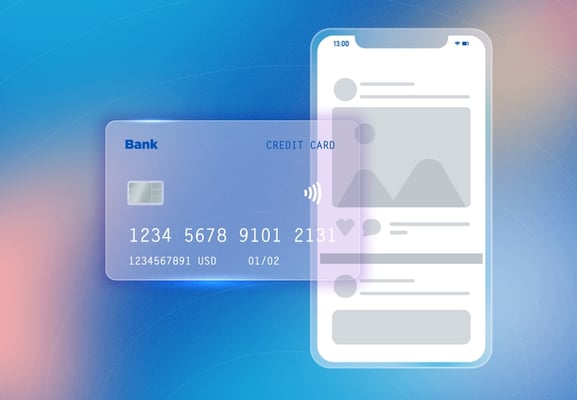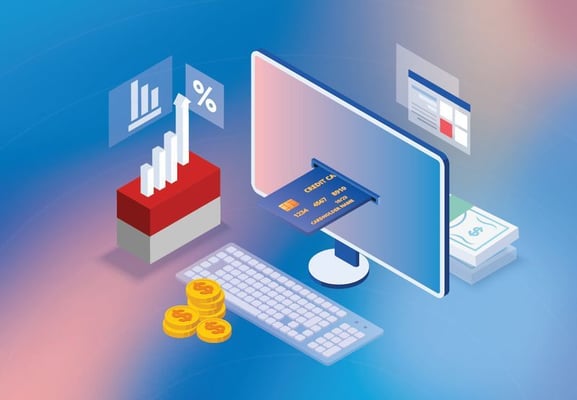Alternative Payment Methods in Southeast Asia: The Ultimate Guide
The alternative payment method revolution is unstoppable. Over half of all consumers worldwide now own a smartphone – and they’re obsessed. With smartphone usage increasing globally, we’re seeing a rise of nontraditional, also known as alternative payment methods, changing the payment landscape.
In this article, you’ll learn about the current and future trends taking place in the world of alternative payments, along with the challenges to innovation, regional outlooks in Southeast Asia, and the most popular alternative payment methods on the market today.
What are Alternative Payment Methods?
Alternative payment methods are any payment methods that are not cash or major credit card brand. The world of alternative payment methods is vast, ranging from digital wallets such as Apple Pay or SamsungPay, bank transfers such as iDeal in the Netherlands, prepaid cards, cryptocurrencies, and buy-now-pay-later (BNPL) such as Swedish powerhouse Klarna.
With so many different ways to pay it’s no surprise to see that alternative payment methods reached 44.5 percent of total eCommerce spend worldwide. Digital wallets alone are predicted to account for 51.7% of e-commerce payment volumes by 2024.
Even though alternative payment methods are considered niche, they're quickly becoming the mainstream in many markets, and it's in emerging markets where we're seeing a high adoption rate and interesting innovation. But more on that later.
What are the benefits of alternative Payment methods?
The cross-border eCommerce market has reached new global heights. Every day, a significant number of cross-border payments are made by online shoppers. By 2023, an estimated 4.2 billion eCommerce users will be active.
In preparation for a truly global customer base, it’s more important than ever for businesses to facilitate alternative payments - so that anyone who wishes to buy from you, can.
In fact, not thoroughly researching and implementing alternative payment methods for your international markets is like leaving your wallet on the table. If your checkout is not supportive of the right payment methods, then you’re not setting yourself up to convert the maximum number of customers.
The payment methods shoppers choose vary widely across different geographic regions and demographic groups.
What that means for merchants is that it’s essential to offer alternative payment methods to convert shoppers and ultimately ensure that they get a top-notch user experience.
For example, while online shoppers in the US predominantly use credit cards, 67% of millennials don’t own a credit card. In France, Cartes Bancaires is most popular, but PayPal isn’t far behind. In China, WeChat Pay or Alipay is king. Cash is still the go-to in Latin America, and the Netherlands favors iDEAL
To successfully operate in different markets and to capture the largest audience possible, you’ve got to localize your eCommerce strategy with alternative payments.
Regional overview: alternative payment methods in Southeast
As the most populous region in the world, APAC is home to more than half the world’s total mobile subscribers which is having a direct influence on the use of alternative payments.
This surge of mobile users directly correlates to engagement in mobile financial services, as APAC is expected to witness the highest growth in the global mobile payments market.
Poised to acquire a share of 42.5% in the global market by the end of 2024 APAC will be the leader in alternative payment methods by a large margin.
Consumers in the region already demonstrate a high willingness to use mobile payments and exceed the global average when self-reporting their participation in mobile banking activities. For example, more than half of them have paid a bill or checked their bank account balance on their mobile phone.
Consumers in APAC are also the most willing to use mobile-only banks, which do not have physical locations and are serviced entirely via a mobile app.
There has also been a leap in the adoption of alternative payment methods in Southeast Asia since the recent pandemic. In a recent report by BCG, 30% of Southeast Asian consumers have reduced their use of traditional payment methods, in an attempt to reduce physical contact.
Popular alternative Payment methods in the Asia Pacific
1. India 🇮🇳
Traditionally a society that revolves around cash and cheques, the majority of India's eCommerce payments are cash on delivery (the customer orders online and then pays cash when the item is delivered), which still accounts for 60% of eCommerce payments. However, India is experiencing its first wave of alternative payment methods. The Indian E-commerce market is expected to grow to 111.40 billionUSD by 2025!
Electronic payments such as Rupay and UPI, are being spearheaded by the Indian government and allowing for the rise in mobile wallets and easier ways to pay.
- RuPay:
Indian domestic debit card scheme, which was launched to tap the untapped consumers in the rural areas of the country and provide them with banking and financial services. In 2019, RuPay reported 1billion transactions through both online and offline payment modes alone!
- Mobikwik:
MobiKwik is a mobile payment network that connects 101 million users with over 50,000 Indian retailers. Users can add funds to the MobiKwik e-wallet via their debit or credit card - and can then be used for Cash on Delivery, pay utility bills, and be used in marketplaces and offline retailers.
- PayTM:
PayTM is one of the largest mobile commerce platforms and widely used alternative payments methods in India. A digital wallet to store funds and make quick payments, customers can use it to pay bills, transfer money and make online purchases.
- Unified Payment Interface:
India is quickly becoming a cashless economy with the introduction of the Unified Payment Interface (UPI). The alternative payment method allows customers to use a virtual debit card on their smartphone, which also makes it possible to instantly transfer funds.
2. Indonesia 🇮🇩
Indonesia has a population of over 200million and is considered one of the most interesting underdeveloped market opportunities in Asia. With a largely unbanked population - only 15% of citizens hold a debit or credit card. It's therefore unsurprising that alternative payments are happening via mobile. While usage is gaining rate, cash upon delivery is still the dominating payment method. The Bank Indonesia also stated that the value of electronic payments reached $13.95 billion during 2020, for a 38.62% growth year-on-year, largely brought on by the recent pandemic.
- Doku Wallet:
A virtual wallet where users can add funds via credit cards, online bank transfers, or cash payments in convenience stores.
- DANA:
DANA Digital Wallet allows its’ 30 million users to pay for almost anything with the tap of a finger. Users add funds via bank transfer, payment cards, and cash deposits at participating retailers.
- GoPay:
What began as an e-money wallet for Gojek services, Indonesia’s leading ride-sharing app for transport, food delivery, and on-demand services. GoPay is one of the most popular alternative payment methods in Indonesia. In fact over 83 million transactions are made every month via GoPay in Indonesia.
GoPay allows customers to conduct transactions directly from their mobile devices by adding funds to the GoPay wallets. GoPay is accepted by over 900,000 merchants across Indonesia and is a vital payment method for anyone looking to expand into the Indonesian market.
- Ovo Cash:
OVO Cash is known as Indonesia's first fintech unicorn and the nation's leading digital payment service. Over 110 million people currently use Ovo Cash, which is an e-wallet that allows users to upload funds to pay for goods and services across 300 Indonesian cities.
3. Malaysia 🇲🇾
Malaysia's eCommerce market is rapidly growing due to mobile payments. Malaysian shoppers are more open to cross-border commerce, unlike their Indonesian neighbors. While the payment landscape is still dominated by traditional methods (Malaysia's credit card penetration is the second-highest in South-East Asia, mobile commerce is ensuring that digital wallets are gaining popularity. According to Worldpay and FIS, 14% of eCommerce transactions in Malaysia were made using digital wallets in 2020. According to Mastercard’s impact study, Malaysia has a mobile wallet usage of 40%, ahead of other countries such as the Philippines (36%), Thailand (27%) and Singapore (26%).
- GrabPay
GrabPay by Grab is Malaysia’s leading digital wallet. Consumers can enjoy numerous services and buy from a vast array of merchants using the GrabPay app. The digital wallet also offers merchants to reach consumers who are unbanked.
- RazerGold
Razer Pay is a digital wallet that's especially popular among Malaysian Millennials and Gen-Z. Initially designed as a prepaid card for gamers to purchase games, Razor Pay is an alternative payment method that allows users to access retail and services in the region.
- BoostWallet
BoostWallet or Boost is a digital wallet that goes one step further. Boost is a popular alternative payment method in Malaysia that has over 5 million users. Boost allows users to use their digital cards and gain loyalty points and rewards on several goods and services.
Also Read: Top Payment Methods in Malaysia That Your Business Needs To Know
4. Thailand 🇹🇭
Thailand has one of the fastest-growing eCommerce markets in South East Asia. While eCommerce sales only account for 0.5% in the retail industry, it's expected to grow at a compound annual rate of 7.7 percent until 2023. While traditional payment methods still dominate the payment landscape, mobile penetration in Thailand is around 60% - allowing considerable room for alternative payment methods to rise. In terms of digital wallets, around 4.8% of shoppers use this as their preferred payment method - of which PayPal is the most popular.
- Bank transfer
Thailand's population is banked, which means that bank transfers is the most preferred alternative payment method in Thailand. Bank transfers are a quick, easy, and expected way to pay for everything in Thailand - so merchants looking to expand there will need to accept this form of payment method with the largest commercial banks.
Convenience stores
Paying via a QR code in participating convenience stores is the norm in Thailand. When using this payment method, a shopper receives a barcode via email to pay at the physical location.
5. Philippines 🇵🇭
The Philippines is one of the most exciting countries for merchants to watch. The Philippines is the second most populous in Asia, after Indonesia. That, combined with a high mobile penetration rate - its eCommerce market is growing at an annual compound rate of 101.4 percent. The B2C eCommerce market in the Philippines may be worth $12 billion by 2025. While cash was the preferred payment method, we're seeing a rise of alternative payment methods in the Philippines.
- GCash
A popular digital wallet in the Philippines, GPay had 20 million active users and more than 63,000 partner merchants in 2019. The e-wallet allows users to pay for goods and services online and offline, send bank transfers, and pay utility bills.
- 7 Eleven
The convenience store franchise 7 Eleven also offers payment options for consumers and merchants in Southeast Asia. The payment method is especially popular among unbanked Filipinos and it's offered by big online retailers. If a customer chooses to pay with 7 Eleven online, they have to then go to a 7 Eleven branch to pay.
6. Singapore 🇸🇬
Singapore is the most active eCommerce market in Asia and is ranked as the third-largest financial center in the world, after London and New York. As such, its residents are no strangers to shopping online. Singapore's e-commerce market reached US$7 billion in 2020 and is set to grow 40 percent to reach US$10 billion by 2024.
The more traditional payment methods such as Visa, Mastercard and cheques are still the leading forms of payment. When we look at the alternative payment methods digital wallets are a firm favorite and are set to dominate in the coming years. In 2020, credit cards (45 percent), digital wallets (20 percent) and bank transfers (12 percent) were the most popular online payment methods,
- Digital Wallets:
Apple Pay, Google Pay, and Samsung Pay are the leading digital wallets in Singapore, 30% of Singaporeans use them to make at least one transaction a week.
- GrabPay:
GrabPay is Singapore's preferred digital wallet. Created by Grab, a transport, food, and service delivery app, GrabPay allows users to link to their credit or debit card or store credit so that they can make payments online and via the Grab app. GrabPay also allows users to Buy Now Pay Later - a major benefit for retailers who will enjoy higher conversion rates.
Good Read: Top Payment Methods in Singapore That Your Business Needs to Know
7. Vietnam 🇻🇳
Vietnam is at the dawn of becoming a cashless society driven by a young population that appreciates the ease of technology. As one of the few countries that saw economic growth in 2020, eCommerce revenue in Vietnam hit 11.8 billion USD last year, posting a growth rate of 18 percent. Alternative payments in Vietnam are driven by digital wallets, pre-paid cards, and bank transfers.
- 9pay
9pay is a new e-wallet option in Vietnam. The customer can get a 9pay account with just a phone number and enjoy numerous services such as transferring funds, withdrawing completely free of charge, paying online shopping, or paying bills quickly and conveniently via one app.
- NAPAS
Vietnamese ATM cards (NAPAS) is an alternative payment method that allows customers to perform payments via domestic debit cards. NAPAS works exactly the same as any other debit card. NAPAS also has a digital wallet that allows users to pay with their mobile phone.
Choosing the right payments partner
When taking your business across borders it's important to have the right payment partners on your side. However, payment gateways offer only varying degrees of coverage for alternative payment methods in Southeast Asia. Working with a payment unification layer like inai ensures that you connect with every payment method your customers could desire!
.png?width=123&height=71&name=inai%20logo%20-%20dark%201(1).png)






